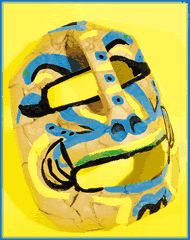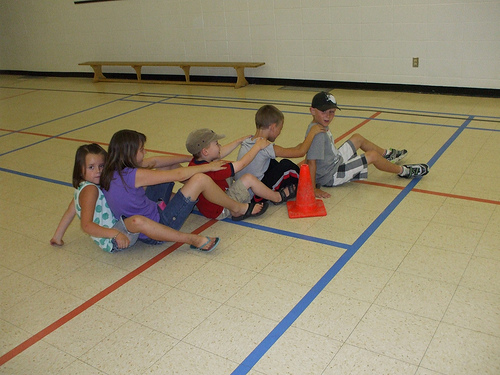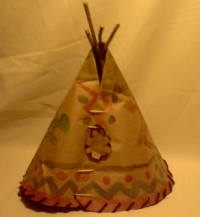This week my goal was to talk with Jack and Maggie about Fables. This is a topic that I thought would be great for children from 2 to 13. I found, however, that it might not be the best for kids under six. That being said, when you have older children and younger children, then younger children tend to engage in what they might otherwise find boring just because a sibling is doing it.
I checked out many wonderful books from the library and also made a list for those of you with older children. The assortment was amazing. Just reading them gave me some great ideas for fable/tall tale activities.
I realize that there is a difference in a tall tale, a fairy tale and a fable. Fables teach a moral lesson, tall tales are exaggerated stories and fairy tales include gnomes, fairies and other enchanted folk. Some of the books I choose were fables and some were tall tales but I didn’t plan on differentiating that for Jack and Maggie. You will find a large book list below.
I asked Jack to guess what a fable was. He replied “A monster”. I told them that it was a pretend story and that every country where people live they have fables or pretend stories.
I choose a fable from Bali, Zaire, Mexico, two from the Native Americans and one from America. I have a large world map and I helped them locate each country we were going to talk about. Both Jack and Maggie are too young to really understand the concept of the world and how maps work but I thought I would introduce the idea and the map.
My plan was to read a book and then have some fable/tall tale activities, food, crafts or game from those countries.
For Bali I had the directions for very cool masks. Older kids will LOVE making these.
For Zaire I found a very fun game called Banyoka. Banyoka is played outdoors among the rocks and trees in Zambia and Zaire. Banyoka means ‘the snake’. It is an obstacle course game that can be played with two or more children and adults.
How to play Banyoka game:
An obstacle course is chosen using trees, rocks and bushes. If rocks and bushes are unavailable then create an obstacle course by using household items such as chairs, boxes, tires, toys, etc.
Divide the players into 2 groups, the more children the more challenging the game. Each group forms itself into a snake (banyoka) by players sitting on the ground behind each other. The legs are spread apart and arms are placed around the waist of the child in front of them.
Each ‘snake’ moves together by shuffling on the ground and moving side to side. They move around their obstacle course toward the finish line. They are not allowed to disconnect from each other which makes it a little tricky when going around the trees and rocks! The winning team is the first to cross the finish line.
I wasn’t going to make a competition of it, just do the course for the fun of it.
For the two Native American books we were going to make a tipi craft. One of the books, Storm Makers Tipi by Paul Goble, has great details about tipis and also a pattern at the end of the book. I also found an elaborate tipi craft made out of paper bags that older children would really enjoy making.
The fable that I choose from America (actually a tall tale) was about Paul Bunyan. I had downloaded a free coloring page of Paul and Babe the blue ox.
After the book on Mexico I had all the fixings so each child could make and eat their own tacos.
This particular Traveling Closet would be good spread out over a few weeks. Each week introduce a new set of books and highlight one country to find out more about , make crafts and eat food that you would find in each country.
Fables and Tall Tales for Children:
- The Tale of Rabbit and Coyote by Tomie dePaola – A charming story of why the coyote howls at the moon, along the lines of Brer Rabbit and the Tar Baby.
- Storm Makers Tipi by Paul Goble – A beautifully told tale about the tipi of the Blackfoot tribe. The book has detailed drawings and at the end a pattern to make your own but the text is written for young children.
- Paul Bunyan by Steven Kellogg – A great American favorite.
- Traveling to Tondo retold by Verna Aardema – A wonderful tale from the Nkundo people ofZaire. It is a tale about the pitfalls of blindly doing what your friends say.
- Moon Mother by Ed Young – A creation story of the Native Americans.
- Lon PoPo by Ed Young – A Red Riding Hood story from China
- John Henry by Julius Lester – A beautifully illustrated story of an American fable.
- Ten Suns retold by Erica A. Kimmel – It is one of the oldest Chinese myth/fables.
- La Pin Plays Possum bySharonArms Doucet – Trickster Tales from theLouisianaBayou
- The Love of Two Stars by Janice Park – FromKorea
- Folk Tales and Fables of Asia and Australia by Robert Ingpen
- Folk Tales and Fables of the World by Barbara Hayes
- Dreamtime: Aborginal Stories by Oodgeroo Nunukul – Australian stories
- The Magic Nesting Doll by Jaqueline K. Ogburn – A sory fromRussia
- The Firebird by Jan Yolen
- The Girl Who Wore Too Much by Margaret McDonald – A story fromThailand
- Tales from Africa by Mary Medlicott
- Tale of the Firebird by Gennady Spirin – A tale fromrussia
- The White Cat by Robert San Souci – A French fable.
- The Adventures of Tom Thumb by Marianna Mayer – An English tale
- With a Whoop and a Holler by Nancy Van Laan – American folklore of the South
- American Tall Tales by Mary Pope Osborne
Possibly Related Posts:
- Inspiring Learning
- Family Philanthropy Project – How to Grow Your Family’s Heart by Jodie Palmer
- Science of making Ice cream with liquid nitrogen
- Fun activities for afterschooing and for homeschoolers
- HELP! Activities and games for small children







{ 0 comments… add one now }